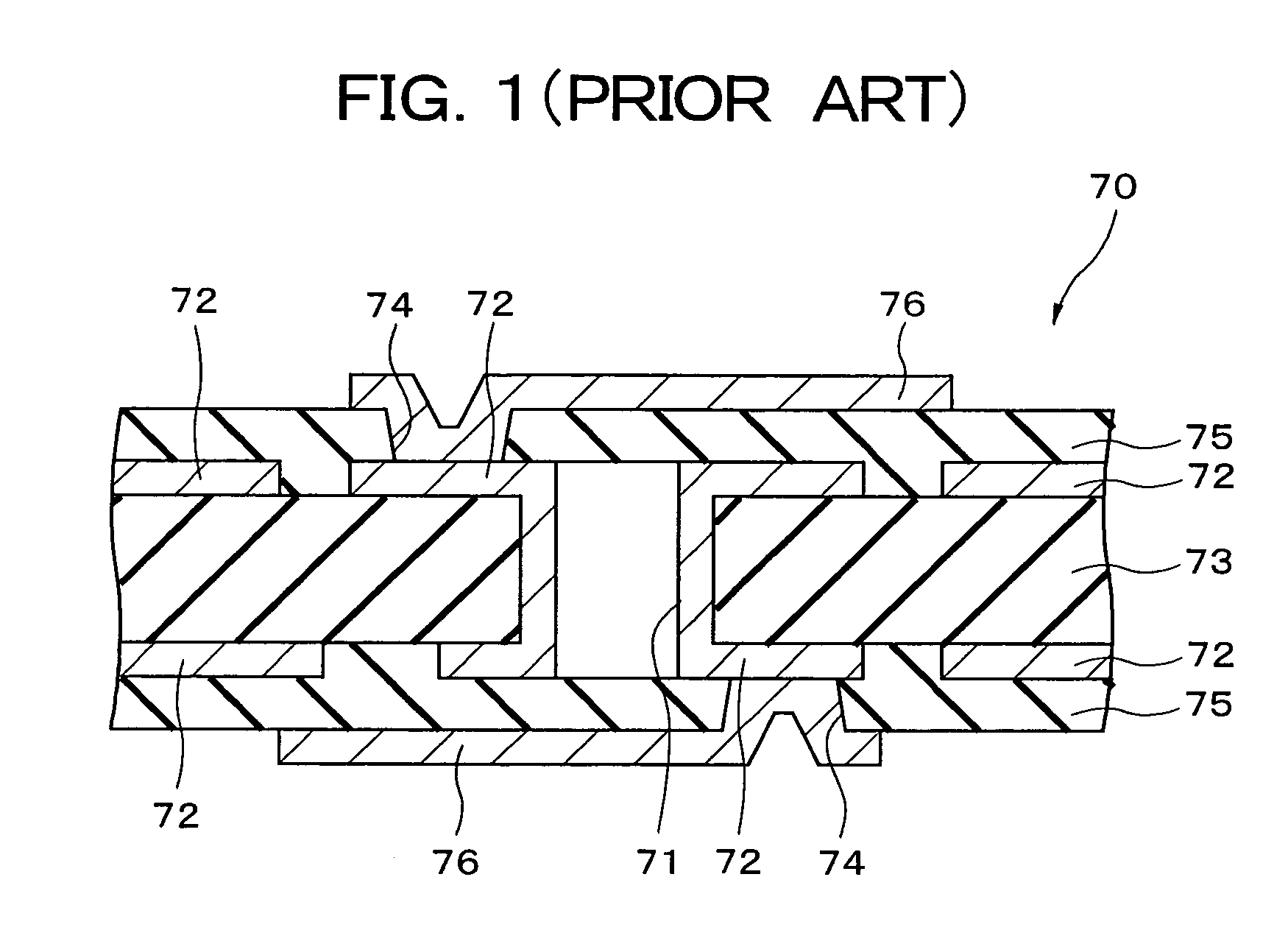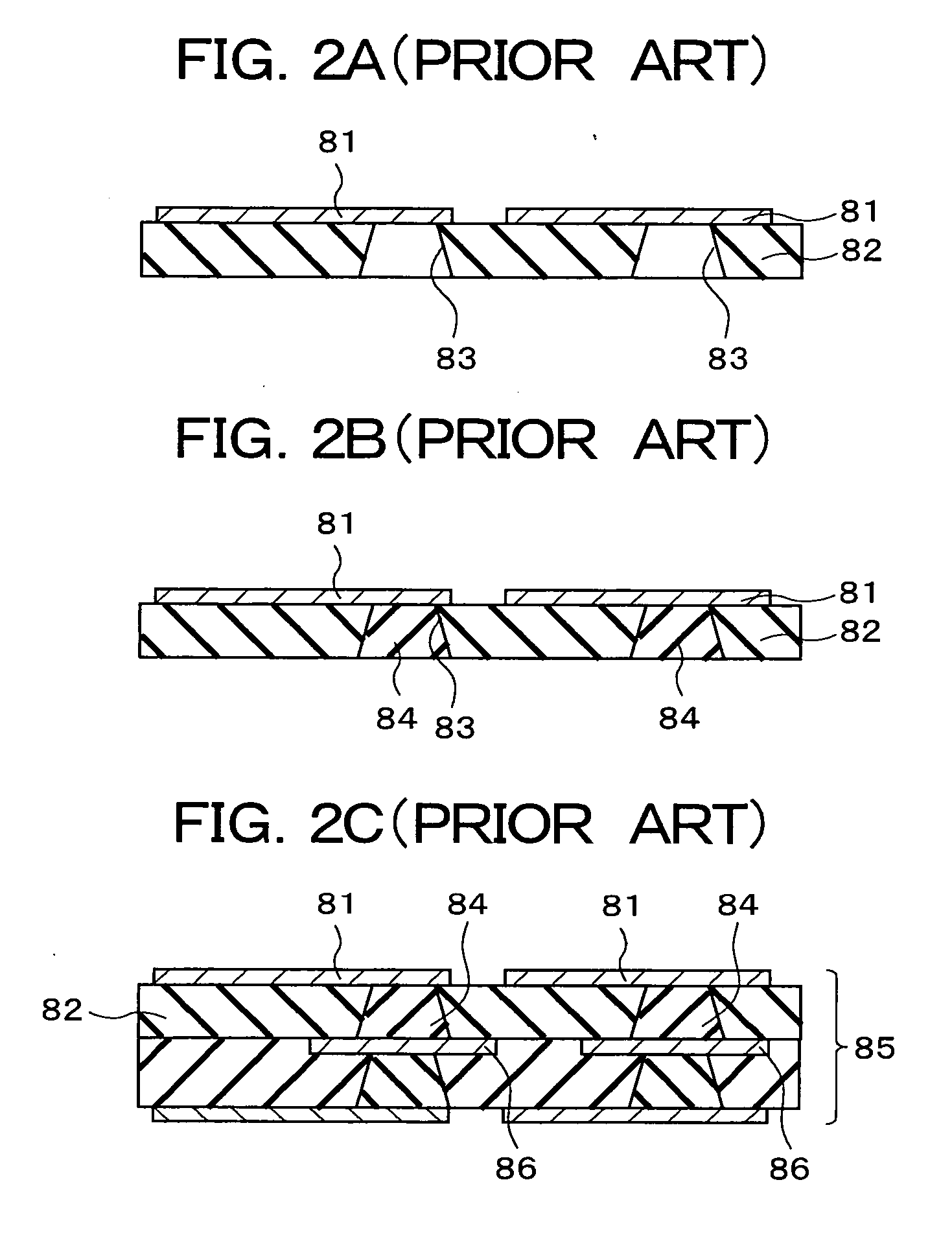Wiring board, method for manufacturing same, and semiconductor package
a technology of wiring board and semiconductor, applied in the direction of printed circuit manufacturing, printed circuit components, printed circuit components, etc., can solve the problems of reduced position accuracy, shrinkage, warping, swelling, and other deformation of the base core board, and achieve the effect of excellent reliability, speed, and multifunctional capability of semiconductor devices
- Summary
- Abstract
- Description
- Claims
- Application Information
AI Technical Summary
Benefits of technology
Problems solved by technology
Method used
Image
Examples
first embodiment
[0047] Embodiments of the present invention will be described in detail hereinafter with reference to the accompanying drawings. The wiring board according to the present invention will first be described. FIG. 4 is a sectional view showing the wiring board according to the present embodiment. As shown in FIG. 4, a board-insulating film 7 in which a plurality of concave portions 7a are formed in one face (the lower face) is provided to the wiring board 13 of the present embodiment. A wiring body 6 is formed in the concave portions 7a of the board-insulating film 7, and an etching barrier 5 is formed on the wiring body 6. The etching barrier 5 and wiring body 6 form the lower-layer wiring. Specifically, the lower-layer wiring is formed in the concave portions 7a provided to the board-insulating film 7. The surface of the etching barrier 5 in this lower-layer wiring is exposed, and this surface constitutes a portion of the lower face of the wiring board 13. The wiring body 6 in the wi...
second embodiment
[0067] Specifically, a bump 14 is disposed on each etching barrier layer 5 of the wiring board 13, and the etching barrier layer 5 of the wiring board 13 and an electrode (not shown in the drawing) provided to the semiconductor device 15 are connected to each other via this bump 14. An underfill 16 is filled around the bump 14 in the space between the wiring board 13 and the semiconductor device 15. A solder ball 18 is disposed on the exposed portion, specifically, on a portion of the pad electrode, of the upper-layer wiring 11 of the wiring board 13. This solder ball 18 is connected to an electrode of the semiconductor device 15 via the upper-layer wiring 11, the internal conductor 8 formed inside the via hole 10, the lower-layer wiring composed of the wiring body 6 and the etching barrier layer 5, and the bump 14. This semiconductor package 29 is mounted to a mounting board (not shown in the drawing) via the solder ball 18. In the semiconductor package 29 of the present modificati...
PUM
 Login to View More
Login to View More Abstract
Description
Claims
Application Information
 Login to View More
Login to View More - R&D
- Intellectual Property
- Life Sciences
- Materials
- Tech Scout
- Unparalleled Data Quality
- Higher Quality Content
- 60% Fewer Hallucinations
Browse by: Latest US Patents, China's latest patents, Technical Efficacy Thesaurus, Application Domain, Technology Topic, Popular Technical Reports.
© 2025 PatSnap. All rights reserved.Legal|Privacy policy|Modern Slavery Act Transparency Statement|Sitemap|About US| Contact US: help@patsnap.com



